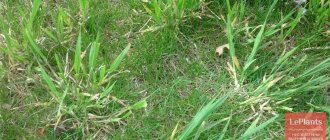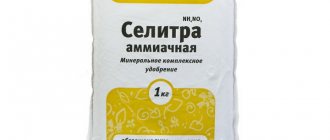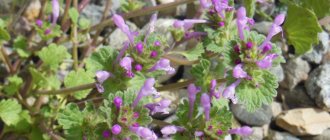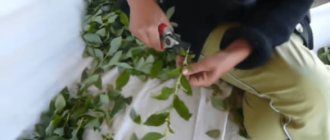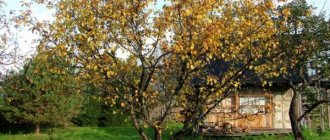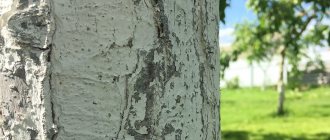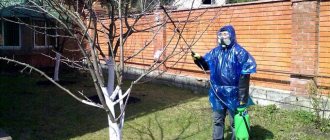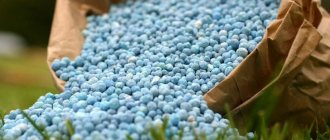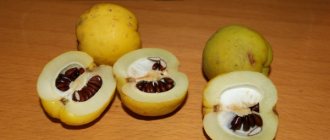Why are herbicides needed?
Weeds deplete the soil, take away nutrients from varietal plants, are a source of diseases and absorbers of organic fertilizers. The level of labor costs can be reduced by using modern means - herbicides.
Benefits of using weed killers:
- Destruction of weeds, preventing the spread of weeds to neighboring dachas.
- Fast, systemic and long-lasting effect.
- There is no need for frequent mechanical soil weeding.
- Control of annual and perennial plants, including trees.
Weeding plants by hand often leads to damage to the stems and leaves of cultivated plants, and the underground root part suffers. Herbicides are sprayed under the root of the weed during the pre-emergence or post-emergence period of cultivated plants; the varietal plant does not suffer from mechanical stress.
Development of herbicides in the 20th century
In 1908, the American farmer Bolly successfully tested these substances in growing wheat, and in the Hawaiian Islands, sodium arsenite demonstrated effectiveness in treating sugar cane plantations.
The method of herbicide treatment using aviation was first used in the Soviet Union. This idea was voiced in 1932 and was soon picked up by many other countries.
A few years later, farmers abandoned acids, sodium chlorate and ferrous sulfate, since the agricultural machinery of that time turned out to be unstable to the aggressive effects of these substances and quickly broke down.
What types of herbicides are there by type of action?
Chemical preparations - herbicides differ in their spectrum of action, chemical composition, and method of action on plants. The classification of drugs is extensive.
Continuous action
A herbicide with a continuous (general) mechanism of action destroys and clears the area of all types of plants. Drugs come in broad and narrow spectrum. Such products are used to prepare land for sports fields, lawns, and to clean roadsides and irrigation canals.
Selective action
Selective action drugs are used in agriculture. Such herbicides are called selective; they affect only certain species and families of weeds.
Kinds
Herbicides are divided according to the nature of their work into:
- Continuous action that kills all greenery;
- Selective (selective), they affect certain instances.
According to the method of killing weeds:
- Contact;
- System.
The first ones fall on the plant, form damage at the site of contact, and act directly on the surface of the green tissue. After which the weed soon begins to wilt and then die. Only the above-ground part of the plant is destroyed. It is advisable to use this type of herbicide against annuals.
The second - their peculiarity is that they enter the plant through the leaves, stems, distributed over all parts, and reach the roots. As a result, it dies. These drugs are effective in controlling perennial weeds that have powerful branched roots.
How to dilute funds
In most cases, herbicides are available in the form of concentrates and must be diluted with water. It is best to use soft rainwater. Experienced gardeners add a little ammonium sulfate to the resulting mixture for better absorption of the main substance.
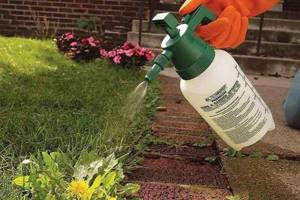
Before preparing the working mixture, it is important to read the instructions. It is necessary to follow safety precautions and observe the dosage.
How to use drugs
The instructions indicate all the features and methods of using the herbicide, highlighting the stages of preparing the working mixture. Spraying is recommended to be carried out in calm weather, without precipitation.
Avoid contact of the active substance with exposed areas of the body, hair and clothing. The solution must be used with caution. Be sure to familiarize yourself with the toxicity class of the herbicide used.
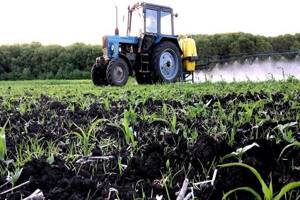
Spray method
The prepared solution must be used immediately after mixing, regardless of whether the treatment is for annual or perennial weeds. When diluted, herbicides begin to lose effectiveness after 2 hours. The drug is toxic; spraying is carried out in a respirator and gloves.
Often the instructions indicate the recommended types of sprayers and a list of necessary equipment for spraying, as well as the technique for using the product. The spraying method can be ground or contact.
Deadlines for depositing
The application period is determined by the growing season of weeds and cultivated plants and recommendations for the use of the pesticide.
Typically, the use of a herbicide is carried out before sowing or planting varietal grasses - a popular way to kill weeds before sowing cultivated grasses, in particular lawn grass. Spraying is often carried out when the weeds have reached a height of more than 3 centimeters or immediately after harvesting.
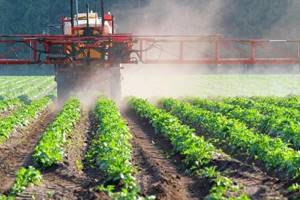
Rules of application
First of all, herbicides are chemicals. Therefore, it is recommended to use them only when there are a lot of weeds on the site, and other methods of controlling them have proven ineffective.
Preventive measures using the drug are carried out in early spring, when the destructive effect on cultivated plants is minimal. Also, weeds are more susceptible to drugs at the beginning of the growing season.
Work is carried out in the absence of wind in the morning until 10 o'clock or in the evening after sunset, from approximately 18 o'clock. During these hours the air humidity is quite high. No work is carried out during rain. The efficiency of processing is also greatly influenced by temperature. In early spring, the thermometer should not fall below 50 C. For application to the soil, the optimal air temperature should be 20-250 C.
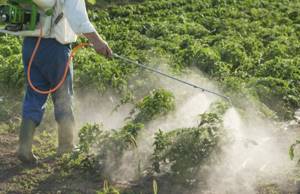
Spray method
When using the spraying method, the necessary equipment is prepared for the process at home, and the sprayer is adjusted directly on the site. You also need to know that the toxicity indicator of a herbicide when spraying is not related to the amount of working fluid on well-wetted plants, but for poorly wetted plants it is advisable to increase the volume of working fluid. The consumption of the solution will be greater in hot weather due to the rapid evaporation of moisture. The working fluid is diluted immediately before use in a non-metallic container.
When using soil herbicides, a long-term toxic effect of chemicals is ensured, and their effectiveness does not depend on external weather conditions. However, rain even favors the uniform distribution of the active substance in the soil. These chemicals can be applied by application to the soil surface or by post-incorporation and incorporation into the soil to a specific depth.
Work related to the use of fertilizers is carried out in special clothing - a robe, hat, boots and rubber gloves. Respirators or masks are used to protect the respiratory tract, and goggles are used to protect the eyes.
Deadlines for depositing
Depending on the environmental conditions, the range of cultivated plants and the types of weeds growing on the site, there are certain times for using herbicides :
- during preparatory work on the site for the next year, at the end of the harvest, soil herbicides are used to destroy malicious perennial weeds that are difficult to remove;
- In early spring, before adding seeds to the soil, soil herbicides are used before harrowing. The purpose of application is the destruction of weeds emerging from seeds;
- when carrying out sowing work, simultaneously with sowing seeds, soil herbicides are used by applying to the soil with easy subsequent incorporation;
- immediately after the completion of the sowing campaign, fertilizers are applied by incorporating them into the soil using harrowing;
- A few days before seedling germination, the application of soil herbicides is carried out using the method of subsequent incorporation or without it if the humidity level is high. Foliar spraying is also possible;
- at the beginning of the growing season, in the presence of a large number of the most malicious weeds, foliar treatment is used, taking into account the degree of toxicity for cultivated plants;
- 10 days after the end of flowering of cultivated plants, foliar treatment is carried out;
- before harvesting within the acceptable time frame for each individual crop - from 10 days to 3 weeks.
Harm to humans
Important! When using herbicides, you must wear gloves, a protective suit, a headscarf and a respirator. .
Herbicides are pesticides belonging to various classes of danger to humans and warm-blooded animals. Chemistry is harmful to humans in any case. Be sure to read the safety precautions for using the product you choose. After treatment, it is recommended to leave the area and stop working on it for at least 24 hours. Safe non-selective herbicides for humans begin with hazard class 3 according to the classification.
See also
Instructions for use of Luger herbicide, mechanism of action and consumption ratesRead
The best herbicides for weeds
The modern chemical industry offers domestic and foreign herbicides with different types of action on weeds. Let's look at the most popular and best of them.
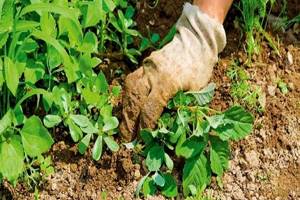
"Agrokiller"
Systemic pesticide of continuous action. The main active ingredient is isopropylamine salt. The drug is highly toxic and is not recommended for use in gardens and vegetable gardens where fruits and vegetables grown for food grow. "Agrokiller" is dangerous for bees and humans.
Penetrates into plants through the green ground part. Inhibits the process of photosynthesis and disrupts the synthesis of amino acids. After use, re-treatment is not required; the drug is highly effective.
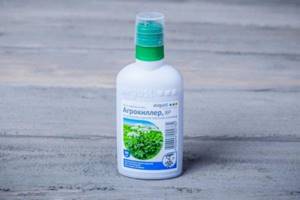
"Antiburian"
Systemic herbicide of continuous action. Suitable for the destruction of both annual and perennial grasses on the site. Kills more than 300 species of weeds. "Antiburyan" does not accumulate in the soil and does not affect the following plants in the crop rotation.
The active ingredient is isopropylamine salt. Available in the form of an emulsion concentrate.
"Antipyrey"
Systemic pesticide with post-emergence action. Recommended for use in planting vegetables, rapeseed, and potatoes. The main active ingredient is chisalofop-P-tefuryl. When it gets on the leaves of weeds, it disrupts lipid metabolism, the result of the treatment is noticeable already on the third day.
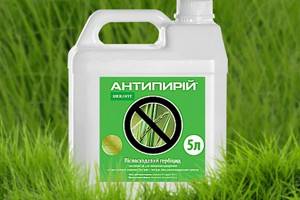
"Arsenal"
A continuous action herbicide, the main active ingredient is imazapyr. Available in the form of a water-soluble concentrate. Suitable for combating hogweed. Efficiency 90%, not washed off by rain. The poison is absorbed by weeds through the leaves and root system simultaneously. Belongs to the 2nd class of danger to humans, dangerous to bees and inhabitants of water bodies.
"Deimos"
Systemic pesticide of domestic production. Penetrates the weeds through the leaves and root system simultaneously, ensuring the destruction of thistle. "Deimos" is prohibited for use in vegetable plantings. "Deimos" is classified as hazard class 3 to humans.
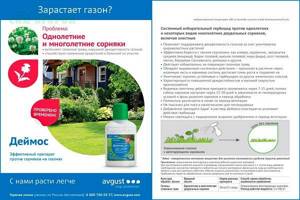
"Zenkor"
For weed control in potato and tomato plantations, it is valued for its ability to quickly control weeds. The active ingredient is metribuzin. Penetrates into plants through the leaves and root system. Treatment can be carried out before or after germination. Non-toxic to bees, has minor restrictions for use in areas near water bodies.
"Lapis lazuli"
A selective pesticide that is effectively used on tomato and potato plantings. Penetrates into plants through the leaves and root system. It is distinguished by its affordable price and high effectiveness in controlling weeds. The active ingredient is metribuzin. The protection period is up to 60 days.
"Lontrel"
A selective action drug for the destruction of difficult to remove weeds. The active substance is clopyralid. It affects weeds through the leaves and quickly penetrates the root system. Does not cause resistance. Safe for humans, bees, warm-blooded animals and aquatic microorganisms.
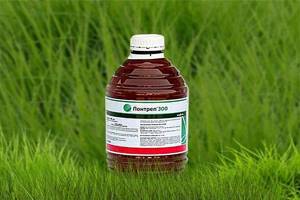
"Miura"
A selective agent, the active substance is chisalofop-P-ethyl. Available in the form of an emulsion concentrate. Used to control weeds in vegetable crops. Features a low consumption rate without loss of efficiency. Has a long-lasting effect and is safe for humans.
"Roundup"
Systemic herbicide of continuous action. The active substance is glyphosate. Penetrates weeds through leaves and quickly reaches the root system. Blocks metabolic processes in the plant. Used in gardens and orchards. Effective against hogweed, trees, and bushes. Safe for humans.
"Tornado"
Full action chemical. The active ingredient is isopropylamine salt. It is one of the safest herbicides. Convenient to use, processing can be carried out at any time at different temperatures. Safe in crop rotation. Non-toxic to bees, humans, small animals, and water inhabitants.
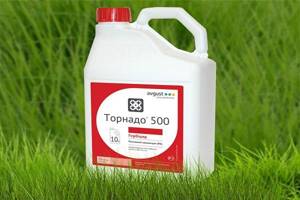
"Tornado BAU"
Continuous action drug, active substance - glyphosate. Penetrates weeds through leaves. The drug is safe for humans and animals; when used correctly, it increases the germination of crops. Available in the form of an aqueous solution.
"Hurricane"
Systemic pesticide of continuous action. The active substance is glyphosate. Recommended for use on personal plots. Spraying is carried out before the crops emerge. Not dangerous for bees and humans, dangerous for the inhabitants of water bodies. The quality of processing is not affected by ambient temperature.
"Hacker"
Systemic post-emergence pesticide with selective action. The active substance is clopyralid. “Hacker” is capable of destroying difficult to remove weeds, in particular thistle. Used to clean the soil under the lawn. Non-toxic to bees, humans, small animals, and water inhabitants. Safe in crop rotation.
See also
Instructions for the use of fungicides for tomatoes and selection criteriaRead
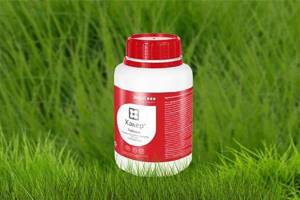
"Chistopol"
Systemic herbicide of continuous action. The active ingredient is isopropylamine salt. Available in the form of an aqueous solution. Treatment is carried out in the temperature range from +12 C to +30 C. Belongs to the 3rd class of hazard to humans. "Chistopol" is safe for bees.
"Chistogryad"
Systemic pesticide of continuous action. The active substance is glyphosate. “Chistogryad” refers to desiccants, chemicals that can dehydrate plants. Suitable for cleaning areas for sowing lawn grass. Washed away by rain. Belongs to the 3rd class of danger to humans.
"Octopus extra"
Systemic drug with continuous action. The active substance is glyphosate. Available in the form of salt. The pesticide can be used only before planting cultivated plants. Penetrates into plants through the leaves, then reaches the root system and blocks all metabolic processes, the weed dies. Belongs to hazard class 3.
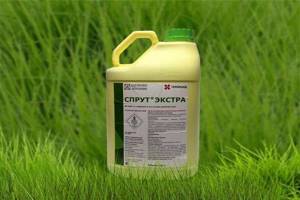
"Corsair"
Selective action, active substance - bentazone. Available in the form of a water-soluble concentrate. Treatment is carried out after germination. Can be used with underseeding of clover and alfalfa.
Dr. Klaus
A selective or continuous action agent, the active substance is glyphosate, effective against hogweed, dandelion, and burdock. Used on garden paths. Suitable for cleaning areas for sowing lawn grass.
"Swift"
A systemic drug with selective action, the active substance is glyphosate. Available in the form of an aqueous solution. Not dangerous for bees and humans, belongs to the 3rd toxicity class. Effective against wheatgrass and thistle. It is used in vegetable plantings, for cleaning garden paths and areas along fences.
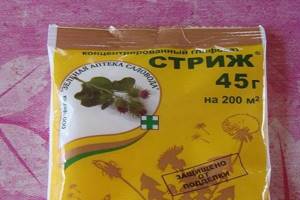
"Prishance"
Systemic two-component post-emergence preparation with a selective spectrum of action, the active substance is ethylhexyl ether. Moderately hazardous to humans, low hazardous to bees. Available in the form of an emulsion.
